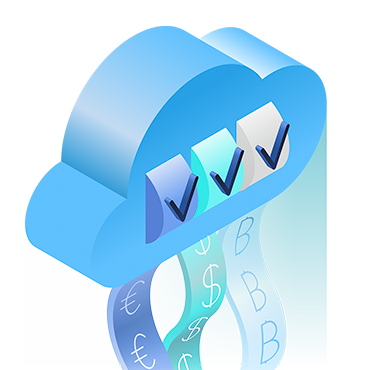FinOps Observability: How to Track and Manage Kubernetes Costs
Updated 20 Feb 2024
In the dynamic realm of cloud computing, where Kubernetes serves as a cornerstone for container orchestration and management, the efficient tracking and management of costs have emerged as critical aspects for organizations aiming to optimize their cloud expenditure. FinOps observability presents a strategic approach to tackle this challenge effectively, providing insights and tools to monitor and control Kubernetes costs seamlessly.
Understanding Kubernetes Costs and Challenges
Kubernetes, with its ability to automate deployment, scaling, and management of containerized applications, offers immense benefits in terms of agility, scalability, and resource utilization. However, the decentralized nature of Kubernetes clusters coupled with the ephemeral nature of containerized workloads can make it challenging to keep track of costs accurately.
The cost of running Kubernetes primarily revolves around various components, including compute resources, storage, networking, and managed services. With Kubernetes dynamically allocating resources based on workload demands, ensuring cost efficiency requires continuous monitoring and optimization.
The complexity of Kubernetes cost management stems from its dynamic resource allocation model, where resources are provisioned and de-provisioned in response to workload fluctuations. This ephemeral nature makes it arduous to accurately predict and track costs, often resulting in unforeseen expenditures.
Central to understanding Kubernetes costs are the various components that contribute to the overall expenditure. Compute resources, such as CPU and memory, form the backbone of Kubernetes workloads, while storage solutions, networking configurations, and managed services further compound the cost landscape. Balancing these components to achieve optimal resource utilization without overspending requires a delicate equilibrium.
Furthermore, the decentralized nature of Kubernetes clusters adds another layer of complexity. With numerous nodes distributed across clusters, each hosting a multitude of pods and services, gaining visibility into resource usage and associated costs becomes a daunting task. Traditional cost tracking methods fall short in this dynamic environment, necessitating specialized tools and practices tailored for Kubernetes environments.
Continuous monitoring and optimization emerge as critical strategies to mitigate Kubernetes cost challenges. Organizations must adopt proactive measures to monitor resource utilization, identify cost anomalies, and implement optimization strategies in real-time. By leveraging monitoring solutions that offer granular insights into resource consumption, organizations can make informed decisions to optimize costs without compromising performance.
In essence, understanding Kubernetes costs requires a holistic approach that encompasses not only the technical intricacies of resource allocation but also the organizational challenges of cost management. By embracing transparency, collaboration, and innovation, organizations can navigate the complexities of Kubernetes costs effectively and unlock the full potential of cloud-native technologies.
Leveraging FinOps Principles for Kubernetes Cost Management
In the realm of Kubernetes cost management, leveraging FinOps principles offers organizations a structured framework to align cloud spending with business objectives effectively. By integrating FinOps methodologies with observability practices tailored for Kubernetes environments, organizations can gain deeper insights into their cloud spend and make informed decisions to optimize costs, thereby maximizing the value derived from their Kubernetes deployments.
- Enhanced Visibility into Kubernetes Resources
Achieving comprehensive visibility into Kubernetes resources and their associated costs stands as a foundational pillar of FinOps observability. This entails utilizing specialized tools and metrics to delve into various facets of Kubernetes workloads, including resource utilization, pod deployment patterns, and cluster capacity. By harnessing these insights with precision, organizations can discern the cost implications of their Kubernetes deployments, facilitating informed decision-making at every stage of the cloud journey.
- Proactive Monitoring and Optimization
Continuous monitoring forms the bedrock of proactive Kubernetes cost management, enabling organizations to identify cost inefficiencies and optimization opportunities in real-time. By employing monitoring solutions equipped with granular insights into resource utilization, performance metrics, and cost trends, organizations can stay ahead of the curve, preemptively optimizing their Kubernetes infrastructure to minimize unnecessary spending. This proactive approach not only ensures cost efficiency but also enhances the overall performance and reliability of Kubernetes workloads.
- Cost Allocation and Chargeback Mechanisms
Implementing robust cost allocation mechanisms serves as a linchpin for fostering accountability and cost awareness across teams leveraging Kubernetes resources. By associating costs with specific projects, departments, or applications, organizations can instill a culture of transparency and responsibility, empowering stakeholders to make informed decisions regarding resource utilization. Furthermore, instituting chargeback mechanisms enables organizations to attribute costs accurately, facilitating fair distribution and informed decision-making at all levels of the organization.
In essence, by embracing FinOps principles for Kubernetes cost management, organizations can unlock significant value, driving operational efficiency, cost optimization, and strategic alignment with business objectives. Through enhanced visibility, proactive monitoring, and robust cost allocation mechanisms, organizations can navigate the complexities of Kubernetes cost management with confidence, ensuring optimal resource utilization and maximizing the return on investment from their cloud deployments.
Exploring Tools and Best Practices
In the realm of FinOps observability for Kubernetes, a plethora of tools and best practices are available to streamline cost management efforts:
- Kubernetes Cost Management Tools: Solutions such as Kubernetes Cost Management, Cost Explorer, and Cloud Financial Management provide specialized features for tracking, analyzing, and optimizing Kubernetes costs.
- Policy-Based Cost Controls: Implementing policies for resource allocation, pod scheduling, and auto-scaling can help control costs by ensuring efficient resource utilization.
- Rightsizing and Resource Optimization: Identifying over-provisioned or underutilized resources within Kubernetes clusters and rightsizing them accordingly can lead to significant cost savings without compromising performance.
Conclusion
In conclusion, FinOps observability serves as a cornerstone for effectively tracking and managing Kubernetes costs in today’s cloud-centric landscape. By embracing FinOps principles, leveraging specialized tools, and adopting best practices tailored for Kubernetes environments, organizations can optimize their cloud spending, enhance cost transparency, and drive greater efficiency in their operations.
With the continuous evolution of cloud technologies and Kubernetes ecosystems, staying abreast of emerging trends and innovations in FinOps observability will be essential for organizations seeking to maintain cost competitiveness and maximize the value of their cloud investments.



